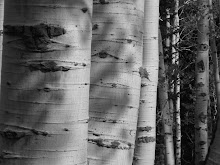We have been blessed over many years to have a wooded area near our home. The individual who owns the property has maintained trails through his woods. It is a favorite quiet area where we go for oxygen loaded air and to enjoy the changing seasons of a natural area. In years past I would walk alone there- I don't anymore, but it is still beautiful and refreshing. Yesterday was "telecommute day" for David so we went for a mid-day walk. These pictures are some of the beauty that we saw.

Shelf fungus grows readily on dying trees. So does moss. The fungus is almost wood like in it's nature. You can't pull if off. It is not soft like a mushroom. These are hard and woody, but light weight. The moss will peel off, if it is thick.

We looked for the trilliums, but did not see even their first efforts. Trilliums are starting to pierce the ground in our yard, but they have the advantage of being near the house and benefit from it's warmth. We saw, but did not photograph the bright glassy red berries of last year's May Lillies. The May Lillies don't seem to like to be stepped on so they will make the trails easy to find as summer approaches. Right now the trails are invisible, we just follow the routes of memory. Mr. Turk must not be as healthy as in years past. We didn't see him out on this nice day and the areas that he has cared for seem a little run down.

This is the bark of a large old Douglas Fir. These trees are very tall and their wood is very strong. This bark was probably about eight inches thick and it made me think of cork (also a bark) - it didn't seem heavy, it seemed airy inspite of being so thick.

this young Western Red Cedar (think pencils) is growing over the stump of a tree that was previously living in this spot. In a few years when the lower stump is decomposed this tree will look like it rooted in the air. It really rooted on the stump and uses the nutrients it can get from the stump. Sometimes this happens with trees that have fallen on the ground. There will be several trees using the downed tree as a starter/helper. These are called nurse logs because they help the young get a good start.

The bark of a dead tree will separate from the wood of the tree. It kind of curls off. I love the bark of trees.

The picture to the right shows the yellow catkins of the hazel trees. They are one of the earliest signs of spring. Their tassels swing in the light breezes of a cool spring day.

We also found the blue, blue feathers of a Stellars Jayin the leaf mould. We love those birds that spend their winters in this area. They are so beautiful when they spread their blue wings in the sunlight. The larger feathers are blue on one side and black on the other. The only black you really notice on the bird is it's head is black.

 The crocus are done but the Hellebores are out. It is the Hellebores natural habit to drop it's head and the petals and the tough sharp edged leaves provide a dry haven for the pollinating insects.
The crocus are done but the Hellebores are out. It is the Hellebores natural habit to drop it's head and the petals and the tough sharp edged leaves provide a dry haven for the pollinating insects.














